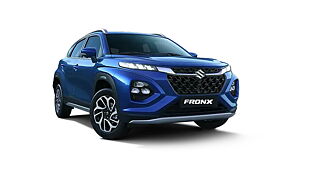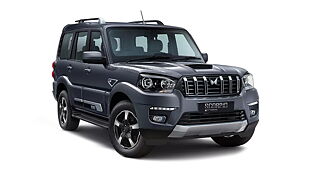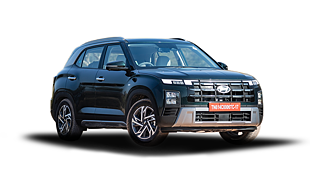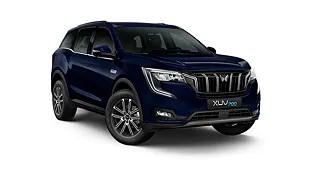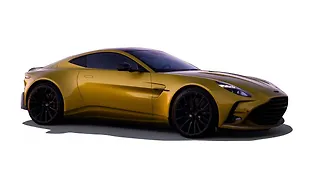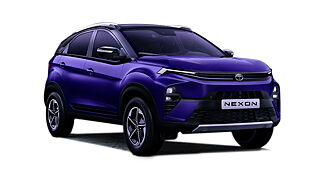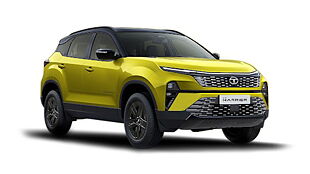Introduction

The Aria is a familiar name to those who’ve been following what Tata Motors have been doing for over a decade now. The first automobile from the Tata stables to be called the Aria was a lovely two-seater convertible concept car which was displayed at the Geneva Motorshow ten years ago. The next year, in 2001 Tata Motors displayed the Aria Coupe concept and that was the last time we heard of a Tata product called the Aria – until now! Tata Motors have christened their new Crossover vehicle, the Aria which internally was referred to in hushed voices as the X2 platform (the X1 being the Vista platform). Some may be more familiar with names for the Aria such as the Xover (crossover) and the IndiCruz since the Xover concept made its debut at the Geneva Motorshow in 2005. In 2006, Tata Motors once again displayed a derivative of their Xover concept, albeit with a pick-up style cargo bed and called it a Cliffrider – which was clearly a lifestyle vehicle. And between then and now, what they’ve been working really hard at, in the last five years is some real mile-munching to create a vehicle that is today their flagship product and a technological tour-de-force for Tata branded passenger automobiles.

The first Tata vehicle to wear the Aria badge was this lovely sports car concept ten years ago.

The Tata Crossover Concept from the 2005 Geneva Motorshow is the root of the Aria project.
The Aria is a very significant product for Tata Motors, not just for the Indian market, but for their key export markets in Europe as well. A closer look at the pictures of the Xover and the Cliffrider will tell you that the final lines and quite a bit of the exterior detailing of the Aria were frozen back then. However, it is good to see Tata Motors finally launch a seven-seater MPV – although the Aria is a lot more than just that thanks to all the four-wheel drive underpinnings and is a true crossover in every sense of the word. It can seat seven people in comfort like an MPV, have fairly car-like driving dynamics and still take on some of the rough stuff like an SUV – the best of all worlds really. The last time Tata Motors displayed an MPV wearing the ‘T’ badge; it was the Calypso way back in 1993. A product that was ahead of its time back then but was never launched, which is quite sad, since it would have jump-started the people mover segment a long time ago. Tata Motors were quite kind to let us have a go at the Aria to bring you readers this review. So do keep reading to see whether the Aria really does live up to its tagline of offering the consumer ‘The Finesse of a Sedan with the muscle of an SUV.’

The Tata Calypso concept in 1993 was Tata's first attempt at an MPV. Sadly it never saw production. (Picture Source: Car & Bike International Magazine - January 1994)
Design

The Aria is best described as a people mover on some serious steroids with all-weather and all-road capability. The large and very intimidating front is dominated by the large three-slat chrome grille flanked by large swooping dual-barrel projector headlamps. Front fog-lamps are inset in the large blacked-out bumper insert which quite helps in getting rid of some visual bulk on the front and gives it a more aggressive look. In fact the Aria is quite close to both the Xover and Cliffrider concept vehicles which were executed by IDEA Design, with the final styling package being almost true to concept. The muscular flared-fenders which house meaty 235/65 sized rubber on purposeful looking five dual-spoke 17” alloy wheels (7.5J) really do give the Aria a slightly chunky and very SUV-like demeanour. In fact the size and stance of the Aria makes it quite menacing when it’s in your rear-view mirror and it’s best to move out of a storming Aria’s way!

Final Tata Aria front-end is quite similar to the Cliffrider Concept of 2006.
When viewed side-on, the Aria looks more traditional people mover and there’s no hiding its MPV-ish lines. In terms of overall size, it may be best to take a look at the Aria vis-à-vis the best-selling MPV – the Innova and Tata’s very own SUV – the Safari. The Aria is 4780mm long while the Innova and Safari measure in at 4580mm & 4650mm respectively. The Aria is 1895mm wide with the Innova and Safari being 1770mm & 1918mm wide. More importantly the Aria has a wheelbase of 2850mm whereas the Innova is 2750mm and the Safari 2650mm. So the Aria is bigger where it really counts and it really does look the part too. The large steeply raked front windscreen leads way to a fairly large flat roof with a slightly thick tapering section at the D-pillar. The B, C and D pillars on the Aria are blacked-out and this gives the Aria a rather clean and swoopy looking greenhouse. It also takes away some visual bulk from the sides and makes it look a little hunkered down. (We can’t help but think CRV when we look at the D-pillar and the rear quarter glass.)

There's no hiding the very MPV-ish side profile of the Aria and the very CRV-like D-pillar.
The bold character lines on the Aria and the little bits of chrome really do add to the overall visual appeal of the Aria’s very cab-forward side profile. The seamless chrome strip that starts at the A-pillar and continue all the way to the D-pillar (just ending before the tail lamps) really do help define the greenhouse and separate the chunky looking sheet metal below from the glass area. This combined with the chrome in-lay door rub-strips really do make the sides of the Aria look a lot lower visually than it really is, and help make it look more car like, than boxy-MPV. The small dash of chrome in the door handles certainly add to the overall up-market look of the Aria. The generous side-view mirrors with turn indicators are mounted on thick stalks and are well finished and don’t feel cheap. However, the rear end of the Aria is much less appealing from a styling perspective, when compared to the front of the vehicle, since it is more squared off than the rest of the car and a mite too utilitarian looking. A nice styling touch though, is the way the chunky rear fender lines wrap around to join the rear bumper and do lend a certain air of toughness and solidity to the rear. The vertically stacked tail lamps are something of a Tata design signature and the large chrome garnish with ‘T A T A’ embossed on it above the number-plate give the rear end some visual relief.
Tata Aria rear-end styling slightly boxy and less slick than front end.
The two large oval chrome exhaust tips also add plenty of muscle to the rear end and there’s no denying that the Aria has plenty of presence on the road. It does look quite purposeful and has plenty of a don’t-mess-with-me attitude; albeit conveyed in a far more sophisticated manner than a traditional more brute-like SUV would. The Aria has fairly good paint quality and the exterior fit and finish is a leap ahead than what we’ve been used to seeing from Tata. Shutlines are vastly improved and the only thing that felt a little out of place was the gap between the bonnet and the fenders – but since it’s a clamshell design, it tends to blend in fairly well and doesn’t stick out like a sore thumb. The Aria will be available in eight paint shades - gray, silver, gold, a deep red, black, pearl white, a nice Germanic blue, and a burgundy-black shade they call Night Shade Black – which is the colour of the Aria you see in our review images.
The Tata Aria will be available in eight shades. We love the Night Shade Black (as driven).
Interiors

The Aria Interiors are one significant step forward for Tata Motors since plastic quality and fit & finish of trim bits were always a step below the segment benchmarks and sometimes quite bad in the past. They’ve only recently improved from the X1 platform onwards (Vista / Manza) and there are plenty of people at Tata fresh out of design school that are looking at styling, aesthetics, ergonomics and materials. The Aria pleasantly surprises with its interior quality at first glance and everything feels decently finished and fit is fairly good too. The dual tone dashboard has a fairly simple and straightforward design and it is very functional and uncluttered. Our Press Demonstrator came with the Black & Plum leather interior. There’s however also a Black & Black and a Black & beige interior colour scheme.
The Black & Plum leather interior is quite classy and the quality of materials are good.
For the first time ever on a product developed in India by an Indian carmaker, there’s an integrated infotainment package that includes Sat-Nav, in addition to the now de-rigueur USB, Aux-In for audio playback and Bluetooth for handsfree telephony. The hardware package comes from Delphi and the maps for the Sat-Nav come from Navteq (now a Nokia owned company) and their street-level maps are getting better by the day for India, but they have some fairly excellent maps internationally. Currently the maps for India cover over 200 cities with 84 of these having excellent street level maps and over 210,000 Points of Interest. The interesting bit about this infotainment system which packs in a 6.5” high-contrast screen is that there are two disc drives. The first (top-most) is dedicated to the Sat-Nav system where you can put in a CD that has the maps on it. The second drive below that is for regular audio playback – Audio CD & MP3 formats only.
The 6.5" screen for the Infotainment system. Maps by Navteq and hardware by Delphi.

The top disc drive is dedicated for navigation. The one below is for audio playback.
It’s a fairly straightforward and easy to use system and it is easy to work it even with the steering mounted controls. There’s a DSP for optimum ‘spatial sound’ in this large interior and audio quality from the 6-speaker setup is fairly good, although it can tend to distort when pushed to higher volumes. Some of us who were confined to the rear seat did tend to miss a remote control, which we felt would have been a nice thing to have, especially since the Aria will most probably end up being chauffeur driven on weekdays. And talking of seats, the Aria can seat seven people! Well, let’s be honest here. Five adults and two children (or two very short adults) is more like it. Two supremely comfortable front bucket seats, a very comfortable middle row for three and a squeeze-in-the-kids third row seats.
The Aria can seat seven people - five large adults & two smaller adults or children.
Just like almost every other passenger vehicle wearing the Tata badge, the Aria has excellent seats which even after spending a few hundred kilometres in provided a fatigue free drive. The driver’s seat has adjustment for height as well as lumbar, in addition to which the steering tilts – making arriving at a comfortable driving position quite easy. Both front seats get adjustable armrests which can be a boon when doing long highway stints. To add to the front passenger comfort, both seatbelts can be adjusted for height. The middle row seats are comfortable and can be customized for recline as well as for legroom, since they slide forward and backward. Both the middle row seats (since it is a 60:40 split seat) tumble forward for easy access to the third row.

The 60:40 split rear seats tumble forward for easy access to the third-row.
The third row seats (a 50:50 split) fold flat into the cargo area when not in use. The third row isn’t a bad place to be. You’ve got cupholders which are hidden away in a side panel and pillar mounted air-con vents of your own. There’s even a three-point seatbelts for the third row seats with adjustable headrests. And if you reach into the boot area, you’ll find a 12V charging outlet and a small lamp which lights up the boot area. Even with the third row in use, there’s enough space to stash bags for a weekend trip for the family and this wins the Aria a big brownie point. The middle row seats get a flip-out centre armrest with cupholders and pillar mounted air-con vents too. In addition to this, there are air-con vents between the two front seats. There’s even a nifty push-to-open cupholder on top of the vents and a 12V outlet (cigarette lighter with an ashtray).
There's still quite a bit of usable boot space, even with all seven seats in use.
There’s plenty of storage space on the roof of the Aria in a very aircraft-like style. These are especially useful if the entire family loves to wear cool looking shades. There’s storage space for four pair of glasses and two other storage bins where you could possibly stash small maps or CDs. Personally, we feel they’re an overkill but then there’s a whole camp of people that loves them and a whole bunch who don’t. The driver also gets a sunglass holder in place of a roof-grabhandle, which we quite liked. We also quite like the very aircraft-like Passenger Airbag-On/Off light on the overhead console area. Rear passengers get their independent three-speed air-con unit which works quite effectively but there’s a distinct whine even on the lowest of speeds. It isn’t something which is very irritating, but it can be far quieter than it currently is.

There's plenty of storage in the overhead bins - especially for sunglasses!
Interiors (contd..)

The vents on the dashboard are all fairly high quality and are good to the touch. They shut close with no air-leakage from the vents, which just goes to show that Tata have paid attention to little bits like this. However there are small bits that need improvement in the Aria, and we do hope Tata Motors is listening to make the Aria a better product than it already is. Take for example the fact that if you want to use the USB / Aux-In or the front 12V outlet, you can’t use the front slide-out cupholders just ahead of the gear lever. And if you use the cupholders you can’t use the ports! This is because the flap that conceals the ports flips down covering the cupholders. This is a real faux-pas in what is otherwise a practical interior.
The USB / Aux-In & 12V outlet is concealed behind a flip-down flap.
There are also little things like the steering controls that don’t light up at night and the fact that the steering isn’t comfortable enough to hold because the small of your palms are on the steering mounted controls. It’s a little uncomfortable and you constantly end up hitting the buttons unintentionally with the slightest of pressure. Then there’s the rear centre armrest flap that lifts up to reveal cupholders, but doesn’t safely stow away. There’s also no convenient lock/unlock button on the driver’s side armrest, so you have to reach over to the knob on the doorpad and pull it to unlock the vehicle. And although there’s one-touch down power windows, a one-touch up for the driver’s side would have been nice.
Driver's side armrest has all controls, but sadly lacks a central lock/unlock button.
But look beyond all this and you’ll love the fact that the Aria has plenty of technology packed in it. There’s a Driver Information System which displays everything from fuel consumption, range, odometer, trip, ambient temperature and even displays warning messages. We forgot to fill up the windshield washer tank and it kept reminding us throughout the day that the tank level was low! Quite handy to have. The Aria also boasts of what Tata like to call ‘Rain Sending Wipers’ and ‘Darkness Sensing Headlamps’. That would translate to auto-headlamps and auto-wipers in normal carspeak. However what we quite like is the fact that the Aria comes with adaptive Cruise control, which is really useful to have. 
Driver Information System display kept reminding us that we forgot to top up washer fluid!
The Aria comes equipped with keyless entry, power windows, electrically adjustable and retractable sideview mirrors, imprinted antenna for the radio (on the rear quarterglass), rear windscreen defogger, rear wash-wipe. The Instrument cluster, save for the DIS display is all analogue. On the left there’s the tachometer with a green band that indicates the range of the turbo spooling and below that there’s the engine temperature gauge. On the right there’s the speedometer and below that the fuel level indicator. Nestled between these two large easy to read dials, are plenty of tell tale lights for every electronic, engine or safety system in the car. It’s also nice to see a display that tells you which particular door in the car has been left open, rather than just a generic door-open indicator. 
The Instrument cluster has more lights than a Christmas tree at start-up.
When Tata Motors decided to go the whole hog, they really did cram in every conceivable feature on their wish list. And if you’re one of those who need more beverage storage there’s a chilled compartment above the glovebox (but it needs some lining to prevent cans from rolling about!). And if you’re worried about reversing into a tight parking spot, the top-of-the-line Aria is available with a reverse camera as standard. And if you pick the two lower-spec variants, you still get ultra-sonic reverse guidance. There’s also small touches like puddle lamps built into the bottom of the doors, for you to watch what you’re stepping onto.

There's an illuminated chiller compartment above the fairly large glovebox.
Safety

Tata vehicles have always been known for their strength and heavy sheet metal. However the Aria is a lot more than just good ‘ol heavy metal bolted on. To start with Tata Motors have gone in for a slightly more old school body on frame construction for the Aria rather than unitary construction which is becoming the norm these days – even for crossover vehicles or lifestyle SUV’s. The Hydroformed chassis or frame is a good starting point here, and rather than using traditional steel sections which will need welding, Tata have gone the Hydroforming way, where sections of metal are bent in this simple yet effective process creating a super strong yet ‘shaped’ frame. 
The Aria has a tough and rigid bodyshell which sits on a robust hydroformed chassis.
The very tough & rigid body is then mounted on to the chassis making for a very strong vehicle indeed. And in case of an accident, the Aria bodyshell, the side impact beams, the collapsible steering along with the six airbags will protect the occupants. There are the standard front driver and passenger Airbags in addition to Side Airbags and Curtain Airbags which deploy in the event of a side collision to protect all occupants from injury. There’s also an Automatic Door Unlock in case of an accident which is a useful feature so that its easier to get out of the car after a bad shunt or be rescued. Six Airbags are really quite a first in this segment and in the price bracket.

Side Airbags (pictured in seat) and side impact beams in the doors can be a lifesaver.
However, to prevent the accident from happening in the first place Tata Motors have taken every acronym in the Safety book and crammed it into the Aria. To start with, the grippy and very meaty tyres are a big plus on the Aria. Then there’s large dual-caliper Disc Brakes on all four wheels which are backed by ABS with EBD which ensures that the car remains in control even under hard braking and the EBD (Electronic Brakeforce Distribution) ensures that each wheel is braking optimally to ensure a safe stop. Then there’s a fairly good Electronic Stability Program (ESP) package on the Aria which is an active safety feature that constantly monitors the driver’s steering input and compares it with the direction that the car is going in. In case it detects loss of control and finds that the car is not steering in the intended direction (due to understeer or oversteer), ESP steps in and applies braking force to the appropriate wheel and restores the car’s stability. In fact we were pleasantly surprised with how effective the Aria's brakes were during the braking test when it hauled the car down from 80-0 kph in 30.6 meters
The Aria has meaty 235/65 R17 tyres and sports four-wheel disc brakes with ABS & EBD.
Traditionally ESP is available on very few high-end luxury vehicles, and the Aria is the first car in this segment to offer ESP. The Aria also comes with Traction Control System (TCS) which is extremely useful in low grip driving conditions like slick tarmac, loose dirt or snow. TCS detects loss of traction under acceleration and supplies adequate amount of torque to wheels (or cuts it) based on amount of traction available at each wheel. With all these active and passive Safety features, the Aria meets the European crash test norms with a four-star rating.
We love the location of the Passenger Airbag On/Off display.
Powertrain

The Tata Aria is powered by the now common 2.2 litre Direct Injection Common Rail (DICOR) engine which first made its appearance under the bonnet of the Safari. This 2179cc, four cylinder, common rail diesel engine has a variable geometry turbo (VTT – Variable Turbine Technology in Tata speak) which helps it belt out 139bhp @ 4000rpm and a fairly meaty 320Nm of torque between 1700-2700rpm. This engine is controlled by a 32-bit ECU and is fairly responsive thanks to 16valves & the double over-head camshafts. Although the engine is largely the same, Tata have worked hard at elimination of some classic powertrain issues from the past and have ensured that the NVH levels in the powertrain department are kept to a low. The engine now sports a dual mass flywheel which isolates torsional vibrations from the powertrain – which was an old bugbear of anyone who has owned the previous generations of Safari. Tata Motors say that the new dual mass flywheel allows for the engine to be driven at lower rpm’s without and driveline vibration & rattle (which was an annoyance) and as a result helping improve fuel economy also.

The Powertrain gets a new dual-mass flywheel which makes the driveline more refined.
The now Tata-traditional G76 gearbox with five-forward speeds now gets some added refinement and has been christened the Mark II. The new G76 - Mark II is equipped with new housings which give it better NVH & overall refinement characteristics. There are changes on the internals too. New steel Synchrocones with Carbon Lining enhance shift feel and reduce shifting effort and a new gear selection and shifting mechanism provides for crisper and more precise gear shifting than before. However, on our test run on the pilot production Press Demonstrator we had, there was a little bit of gear lever shake and we found a bit of an issue with driveability in the 3rd at low speeds before the turbo spools just past 1600rpm. 
The G76-MarkII gearbox is more refined than before, but it still isn't as slick as can be.
But the pièce de résistance is really the four-wheel drive mechanicals that Tata Motors have put into the Aria. They call it their ‘Adapterra’ Torque On Demand (TOD) all-wheel drive system whereby the vehicle is always in four-wheel drive mode. The TOD® All-Wheel Drive system continuously takes in inputs like vehicle speed, wheel speeds, throttle position, ABS sensor signals and the two-wheel drive mode switch and then the ECU of the TOD® gearbox decides how much torque to distribute to the wheels. This system coupled with the ESP and TCS work towards giving the Aria sure-footedness in any sort of inclement weather conditions and work invisibly like a giant guardian angel. The TOD® is from the best name in the four-wheel drive business – BorgWarner.

The Adapterra AWD system ensures that it always stays surefooted in all road conditions.
The TOD® transfer case technology was closely worked on with Tata Motors by DivgiWarner (the Indian JV between Divgi Metal Wares Ltd & BorgWarner USA). Two years of extensive winter testing on ice lakes in North America, Canada and the Scandinavian countries ensured that the system performed flawlessly in the toughest of conditions. In fact the Aria, we have been told, has seen a cumulative 4.4million kilometres of testing – and mostly focussed in fine tuning the powertrain and suspension package. There’s a little button on the centre console which says ‘4x2’ and pushing this button basically converts the Aria into a rear-wheel drive and disconnects the front end so the front is essentially just free-wheeling. This is what Tata Motors like to call an economy mode so the vehicle can just be driven like a regular rear-wheel drive MPV.

Pushing this button enables the front wheels to freewheel for better economy in 4x2 Mode.
Driving Dynamics

The Aria is unlike any Tata SUV or UV you’ve ever driven. And this is an excellent thing! It’s only when you drive something like the Safari and the Aria back to back do you fully understand just how far ahead the Aria is in every conceivable way! Acceleration is fairly brisk for something which weighs over two and a half tons and the levels of refinement are simply excellent. It does the quarter mile in 19.8 seconds and 60kph comes up in 6.0seconds and 100kph comes up in a fairly acceptable 15.8seconds for a something that’s this heavy. Tata have really worked hard on the NVH package on the Aria and even when the vehicle is passing you at low or high speeds, there’s barely any noise. Inside, it is very refined and quiet with no powertrain noise. Even over bad roads, there are no squeaks, rattles from the suspension or the interior trim bits. In fact tt looks like someone in the Tata R&D took a giant notepad and made a list of all the issues with older generation Tata UV products and swore he wouldn’t sleep until it was all sorted. And it is heartening to see this level of refinement and performance – which really does mean that Tata is bang on track with their X-platforms which can only bode well for future generation Tata passenger vehicles. 
The Aria suspension setup provides for a comfortable and composed ride.
The Aria has fairly good on-road manners, but there is a slightly more body roll than one would have liked. It is extremely composed and refined at cruising speeds and it handles unlike any other Tata UV you may have ever driven. A lot also must be said for the generous wheel and tyre size, not to mention the reassuring all-wheel-drive as well as the ESP, ABS and Traction control that are there to constantly ensure that Aria’s road manners are always in check. The front suspension is a double wishbone coil over damper and the rear suspension is a five-link multilink unit with coil springs and shock absorbers. It is clearly setup for better ride quality over outright handling but this works out just fine since we had no passengers complaining over quick expressway runs or even on badly rutted roads. With 200mm of ground clearance, the Aria can tackle most large potholes with ease and what you do end up with at the end of the day is a vehicle that has a very sedan-like ride quality & SUV like off-roadbility since you can negotiate surfaces that would otherwise leave a two-wheel drive stuck for good.

The hydraulic-assist power steering feels well weighted and has plenty of 'feel'.
The Aria’s tilt-adjustable steering wheel has plenty of feel and feels very reassuring and well weighted even at the limit. Tata Motors still run a purely hydraulic-assist power steering system on the Aria which may be old school to some, but it works like a charm. The turning radius is also fairly acceptable at 5.6meters considering the large wheel & tyre combo and the four-wheel drive mechanicals. The gearbox, though upgraded could have been just a little more positive to use and there’s still a slightly narrow gate on the 3rd; so quick upshifts from 2nd to 3rd still need some more attention to the way you slot it into gear. The shape of the gear lever is fairly okay and comfortable to hold but the leather stitching on the knob our Press Demonstrator came with wasn’t seamless and well finished.

The Aria tackles bad roads and the occasional off-road excursions with aplomb.
The Aria doesn’t like to be lugged at low speeds in a higher gear as our in-gear tests revealed. The vehicle is barely above idle (30-50kph in 3rd & 4th gear) and until the turbo kicks in at 1600rpm, it does struggle a bit. However at 80kph in the 5th the engine is on the boil since it is turning over at just a bit over 1600rpm. 100kph in the 5th has the engine spinning at 2000rpm and 120kph is at 2400rpm in the 5th. What this translates to is seamless overtaking at highway speeds, even in the 5th without a downshift, since the engine is right in the powerband with the turbo whistling away between 1600-2700rpm. Over the course of our tests the Aria returned a fairly respectable 14.77kpl on the highway at 80kph in the 5th and a worst figure of 9.66kpl when driven flat out which includes quite a few pedal-to-metal 170kph top speed runs. An overall economy of just 11.88kpl is fairly respectable for a vehicle of this size, especially when it is running on all-wheel drive all the time. With a 60 litre fuel tank the Aria has a useful range of about 700 kilometres on a single tank-full.

Average Fuel Consumption display is fairly accurate, as we discovered!
Overall Evaluation

So what then is the Aria? And is it worth buying? Well, the Aria is really the first Indian four-wheel drive Crossover and Tata Motors have done a fairly decent job with the vehicle mechanicals, interiors and overall package. However there are some small issues (like the bits we’ve spoken about in the interior mainly) that need to be sorted, but these aren’t very difficult issues to address. What Tata Motors have successfully managed to achieve to an extent, is a robust new four-wheel drive platform which will spawn not just the Aria but other vehicles over the next few years. The Aria rides and handles well and has a feature set that would shame some fancier and very expensive vehicles sold in India. It takes the core Tata philosophy of really offering more car per car, in a package that is very contemporary, if not ahead in several areas in India. The fact that the Sat-Nav system only comes with three languages as standard (English, Italian, Spanish) only reinforces the fact that Aria is all set to hit Tata’s largest export markets – Italy, Spain and Poland where they now have a presence. A left hand drive version in the works with a Euro5 compliant engine and will be ready only towards the middle of 2011.
The Aria has a fantastic feature-set at a value price. More car per car, indeed.
The Aria is at the moment being launched in three trim levels, all with the selectable Adapterra 4x4 and extremely well equipped. The lowest spec variant is called the Pleasure, the mid-spec is the Prestige and the top-of-the-line is the Pride. The only exterior distinguishing factor on the Pleasure, apart from the badge, is the 16” pressed steel wheels which also wear fairly hefty 235/70 R16 rubber. There are some trim and interior option differences but all variants come with all the useful safety kit (ESP/ TCS / ABS) including Airbags as standard. The Pride includes the side and curtain airbags to the standard driver and front passenger airbag. With the Aria range starting at Rs. 12.91 Lakhs for the Pleasure and going up to Rs. 15.50 Lakhs for the Pride (prices ex-showroom Delhi), the Aria makes a strong case for itself. It’s a contemporary looking, comfortable seven-seater vehicle with decent fuel economy, plenty of interior space and standard features at such an attractive price point that it is difficult to ignore it in such a value conscious market. Some people may question why the Indian consumer may opt for a ‘premium’ Tata branded vehicle, but the fact of the matter remains that the Tata name is far more respected than it used to be in the passenger car business. It’s given India plenty of firsts and one must acknowledge the fact that there’s so much of engineering and electronic kit packaged in this crossover. Sure, there are some minor flaws, but they’ve got it almost spot on.

The new flagship for Tata branded automobiles is off on the right foot to storm the market.
Although the Aria is extremely MPV-like, the mechanicals are more in the soft-roader & SUV class. Which puts the Aria with its pricing bang smack between SUV’s like the Safari and the Scorpio on one end, with the Yeti, Fortuner, Captiva, Endeavour (all diesel) at the other end. Sure, it may not be able to cope with the mud-plugging you can do with some of these four-wheel drive SUVs, but it will more than happily do a trip into the farm or the beach. It will handle snowy mountain passes and icy roads with ease. It’s really a large all-weather and all-road family car. It is also positioned just above the Innova which is currently the leader when it comes to the MPV segment in India. So there’s a good possibility that Tata Motors may introduce a toned down version of the Aria with just rear-wheel drive – which will put it bang smack in the MPV space. We have good reason to believe that this variant will be christened ‘Pure’ and will possibly sport 16” wheels, no fender flares and will come with a limited-slip differential since it will be a rear-wheel drive only. So is it worth buying now? We would have to answer an undoubted yes! There hasn’t been a vehicle like the Aria that has so much kit and does it all, at this price. Gone are the days of dissonant Tata utility vehicles. There’s a new tune blowing through Tata Motors, and it certainly is a pleasant sounding Aria.
> Don't miss looking at 100+ detailed pictures of the Aria on the next page!
Test Data
Engine Specifications
2.2-litre 140bhp View specifications
Speedo Error
|
Max in Gear
| Gear | Speed (kph@rpm) |
|---|---|
| 1st | 41.9@4800 |
| 2nd | 77.1@4750 |
| 3rd | 123.2@4650 |
| 4th | 160.4@4400 |
| 5th | 171.2@3600 |
| 6th | - |
Performance Test Data
| Top Speed | 171.2kph |
|---|---|
| 0-60kph | 6.0secs |
| 0-100kph | 15.8secs |
| Quarter Mile (402m) | 19.8secs |
| Braking 80-0kph | 30.6m |
| 30-50kph in 3rd | 5.4secs |
| 30-50kph in 4th | 10.3secs |
| 50-70kph in 5th | 11.6secs |
Fuel Efficiency
| City | Highway | Overall | Worst | |
|---|---|---|---|---|
| Mileage (kpl) | 11.21 | 14.77 | 11.88 | 9.66 |
![Tata Aria [2010-2014] Image Tata Aria [2010-2014] Image](https://imgd.aeplcdn.com/272x153/cw/cars/discontinued/tata/aria-2010-2014.jpg?q=80)


